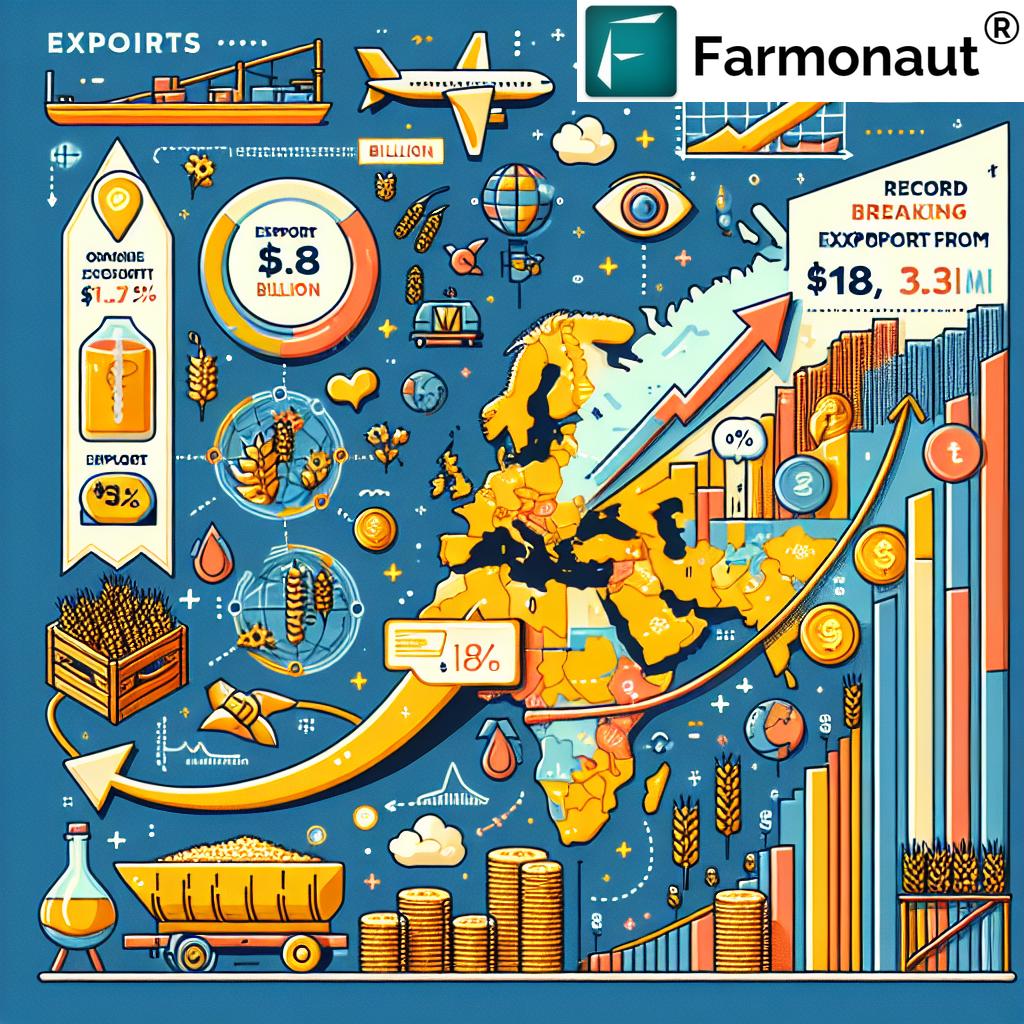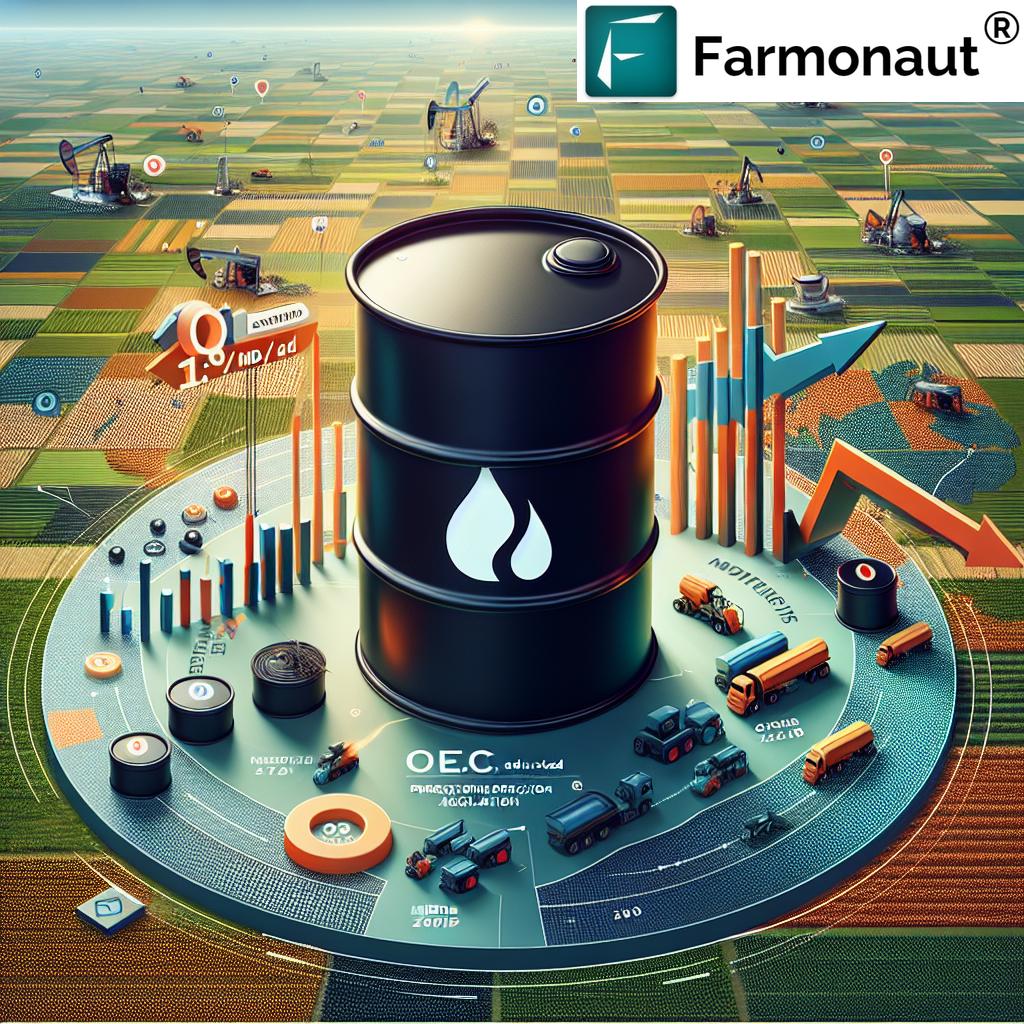Unleashing Grain Market Chaos: Geopolitics and Weather Reshape Global Agriculture Landscape

The global grain trade is experiencing unprecedented turbulence as geopolitical tensions and extreme weather events continue to reshape the agricultural landscape. From the heartland of America to the vast fields of Eastern Europe, farmers and traders alike are grappling with a new reality that’s forcing a reevaluation of traditional market dynamics.
Geopolitical Storms Brewing in the Grain Markets
The geopolitical impacts on agriculture have never been more pronounced. As conflicts rage in the Middle East and uncertainty looms over Black Sea supplies due to the ongoing Russia-Ukraine war, the grain market finds itself at the mercy of forces far beyond the control of farmers and agronomists.
- Black Sea grain exports facing significant disruptions
- Middle East conflicts adding to supply chain uncertainties
- Shifting alliances affecting traditional trade routes
The geopolitical impact on wheat prices has been particularly stark. With Ukraine being a major wheat exporter, the conflict has sent shockwaves through the market, causing prices to fluctuate wildly. Traders are now closely watching the Black Sea grain export outlook, as it could significantly influence global grain market trends 2024.
Weather Woes: Nature’s Role in Market Volatility

The weather effects on crop production have been equally dramatic. From severe droughts in key growing regions to unexpected flooding in others, Mother Nature seems determined to keep farmers on their toes. These climate-driven challenges are having a profound impact on crop yields and, consequently, on international grain prices.
- Drought conditions affecting wheat production in Russia
- Excessive rainfall delaying harvests in Canada and the EU
- Low water levels in major rivers impacting corn transportation
To stay ahead of these weather-related challenges, many farmers are turning to advanced technologies. Farmonaut’s satellite-based crop monitoring system has become an invaluable tool for predicting and mitigating weather-related risks.
FAO Food Price Index: A Barometer of Global Agricultural Health
The FAO Food Price Index serves as a crucial indicator of the overall state of global agriculture. According to the latest FAO Food Price Index analysis, grain prices in September were 3% higher than in August, though still 10.2% below the previous year’s levels.
- Wheat prices increased due to unfavorable weather conditions
- Corn prices rose, driven by logistical challenges and strong demand
- Vegetable oil prices reached their highest level since early 2023
These fluctuations underscore the delicate balance of the global food system and the need for robust monitoring tools. Farmonaut’s satellite weather API provides real-time data that can help stakeholders make informed decisions in this volatile market.
USDA WASDE Report: Shedding Light on Global Supply and Demand
The USDA WASDE report is another critical tool for understanding the state of global agriculture. The latest USDA WASDE report highlights paint a complex picture of the grain market:
- Global wheat supplies reduced by 1.9 million tonnes
- World wheat consumption down by 2.4 million tonnes
- Corn exports forecasted lower for Ukraine and Russia
These figures have significant implications for corn export trends and the wheat production forecast. Farmers and traders alike are closely monitoring these trends to adjust their strategies accordingly.
Oilseed Market: A Bright Spot Amidst the Chaos
While much attention has been focused on grains, the oilseed market outlook offers a glimmer of hope. The international oilseed market forecast suggests a slight increase in production, despite challenges in some regions.
- Global oilseed production forecast at 687.32 million tonnes
- US oilseed output expected to reach 134.4 million tonnes
- Sunflowerseed and cottonseed production showing positive trends
For farmers looking to capitalize on these trends, Farmonaut’s mobile apps offer on-the-go access to critical agricultural data:
Looking Ahead: Navigating Uncertain Waters
As we look towards 2024 and beyond, the global grain market remains in a state of flux. Geopolitical tensions continue to simmer, climate change shows no signs of abating, and technological advancements are reshaping how we approach agriculture.
In this challenging environment, staying informed and adaptable is key. Tools like Farmonaut’s satellite weather API developer docs can provide invaluable insights for those looking to navigate these turbulent times.
The grain market chaos unleashed by geopolitics and weather has reshaped the global agriculture landscape. As we move forward, it’s clear that success in this new era will depend on a combination of traditional farming wisdom and cutting-edge technology. By staying informed, adaptable, and innovative, stakeholders across the agricultural sector can not only weather this storm but emerge stronger on the other side.
In these uncertain times, one thing remains clear: the resilience and ingenuity of the global farming community will be key to ensuring food security for generations to come.
















